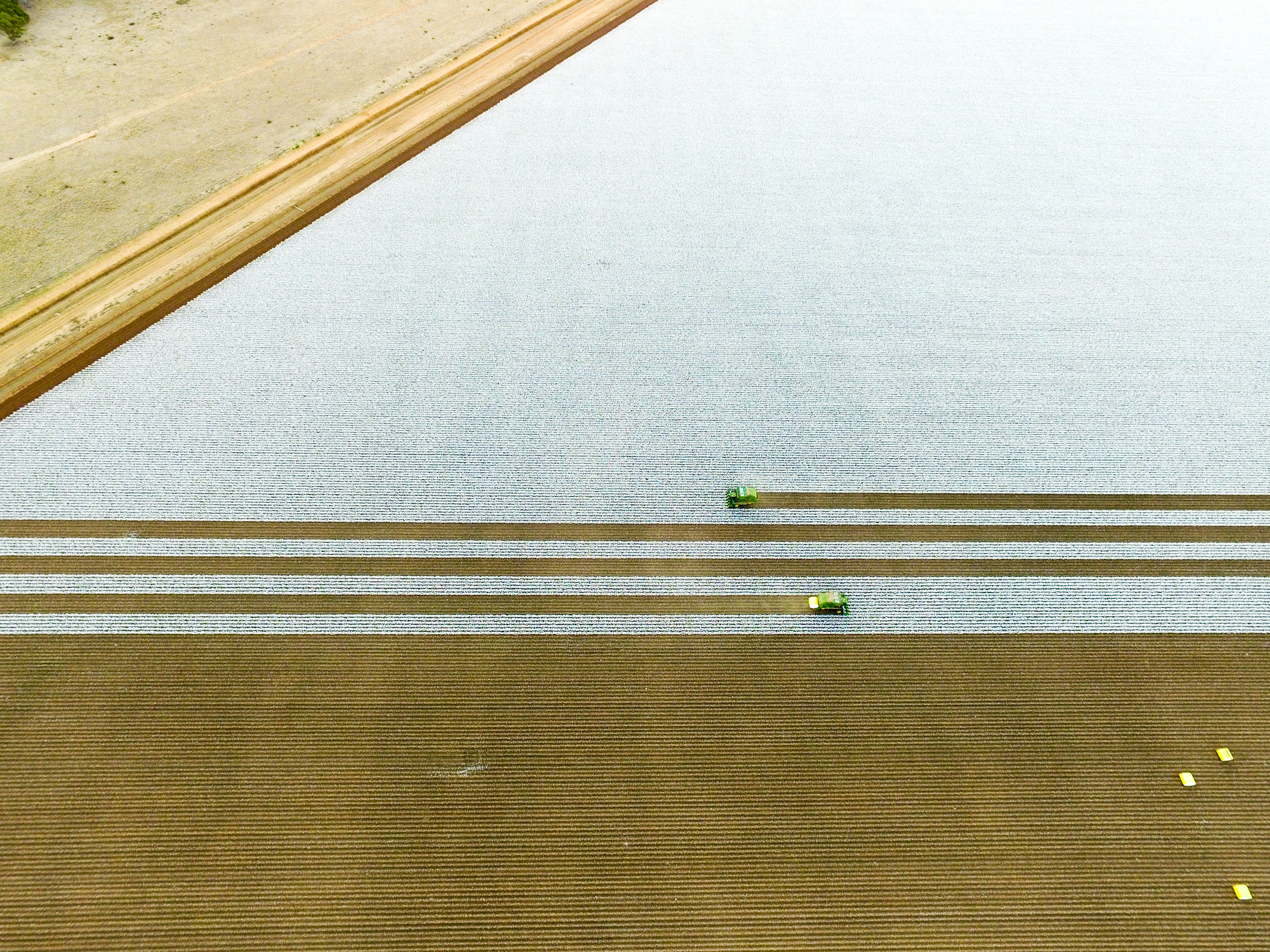Biotechnology and cotton
- GM cotton has been commercially grown in Australia since 1996.
- More than 99% of the cotton grown in Australia contains GM traits.
- Since the introduction of Bt cotton, there has been a 97% decrease in insecticide use since 1992.
Overview and history
Biotechnology refers to the use of cotton varieties with transgenic or genetically modified (GM) traits. GM cotton has been commercially grown in Australia since 1996 and more than 99% of the cotton grown in Australia contains GM traits. GM cotton plants are either herbicide-tolerant, resistant to the major caterpillar pest Helicoverpa spp., or both.
GM cotton that provides resistance to Helicoverpa spp. is known as Bt cotton. Bt cotton was developed using the common soil bacterium Bacillus thuringiensis (Bt). Bt cotton produces proteins that are toxic to the specific Helicoverpa spp. pest when it eats the plant.
Bollgard 3® is the current Bt cotton grown in Australia. It contains three different insecticidal proteins (cry1Ac, cry2Ab and vip3A). This protein ‘stack’ contributes to resistance management as it is more difficult for the pest to overcome all three toxins in unison.
Herbicide-tolerant cotton, Roundup Ready®, was commercially released in Australia in 2001. The Roundup Ready® cotton is resistant to the herbicide glyphosate. Herbicide-tolerant crops are not harmed by the herbicides applied to the weeds around them, providing growers with greater flexibility in weed control options.
In Australia, each genetic trait is individually assessed on a case-by-case basis by the Office of Gene Technology Regulator (OGTR), Food Standards Australia New Zealand (FSANZ), and the Australian Pesticides and Veterinary Medicines Authority (APVMA).
The commercialisation and ongoing monitoring of Bt cotton in Australia is a unique process involving the technology provider, growers, scientists and government regulatory bodies. These stakeholders are also involved in the development and ongoing review of ecologically-based stewardship strategies that aim to delay the evolution of resistance to Bt cotton.

Benefits of biotechnology
The use of biotechnology in cotton has made a significant contribution to the dramatic reduction in insecticides applied to Australian cotton crops. Before the availability of Bt technology, most Australian cotton crops were typically sprayed 10 – 14 times per season with insecticides for Helicoverpa spp. management (Wilson et al. 2013) in order to deliver effective control. Since 1992, there has been a 97% decrease in insecticide use. Crops are now typically subject to no more than 0 - 3 insecticide treatments per crop.
The introduction of Bt cotton has enabled the implementation of improved Integrated Pest Management (IPM) on cotton farms. IPM strategies use a combination of natural controls and pest-specific chemistry to further reduce pesticide use.
The use of herbicide-tolerant technology has seen a reduction in the use of residual herbicides and soil tillage. This has environmental benefits through reduced herbicide run-off and reduced soil erosion.
Other environmental, social and economic benefits of biotechnology in cotton include: increased populations of beneficial insects and wildlife in cotton fields, reduced pesticide run-off, improved farm worker and neighbour safety, more time for farmers to spend with their families, a decrease in labour and fuel usage, improved soil quality, reduced production costs, increased yield, reduced risks and further opportunities to grow cotton in areas of high pest infestation.
There are financial benefits for cotton farmers using biotechnology. Graham Brookes, Director of PG Economics UK told the National Press Club in an address in 2012, “Since 2010, the total farm income gain derived by Australian cotton farmers from using this technology has been $395 million, an average of about $180 per hectare.”
(Photos by Mark Middendorf - submitted into CA's 2018 Click 2.0 photo competition)
